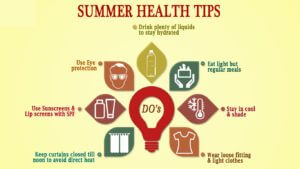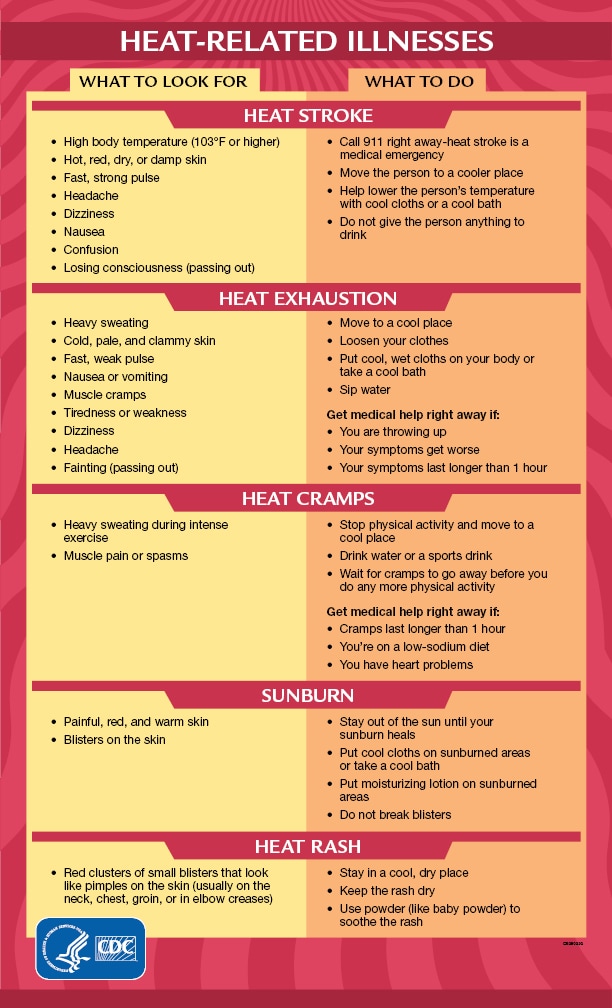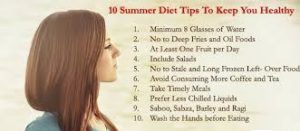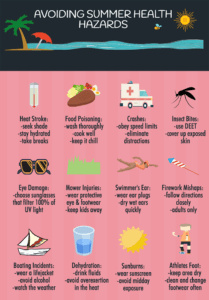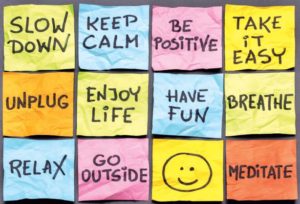
Stress Management
What is Stress
The term “stress” is difficult to define and may mean different things to different people in divergent circumstances. The oldest definition is “non-specific (i.e. common) result of any demand on the body, whether the effect is mental or somatic ( affecting body )”. It’s the gap between our expectations and reality. More the gap, more the stress so expect nothing and accept everything.
Definition: Stress management defines stress precisely as a person’s physiological response to an external stimulus that triggers the “fight-or-flight” reaction.
Stress is a reaction to your body experiences as a result of a demanding circumstance or event that requires immediate action and attention. Specifically, this reaction causes your nervous system to produce hormones (adrenaline and cortisol) and results in quickened breathing, a faster heartbeat, tightening muscles, and even a sudden burst of energy.
Stress is our response to specific stimuli called “Stress inducers“. Or they are the events that generally produce stress. They may be temporary or chronic, leading to negative health consequences or outcomes changing a person’s life. Although life itself is dependent upon certain forms of stress, it is only when stress is handled poorly by the body or mind that it becomes a health hazard. Stress that is expressed or experienced negatively can be linked to many physical complaints, from headaches and hypertension to symptoms affecting a person’s mental state. Anxiety, depression, and feelings of anger, fear, helplessness or hopelessness, and other emotions are often linked to stress. ( See Stress-diagram )
According to the latest health reports, Stress is said to be one of the largest killers of man today. Stress is now becoming more accepted as being crucially related to our total health – physical, mental, and emotional. According to researchers, the majority of all physician visits are prompted by stress-related symptoms that are known to cause or worsen medical conditions.
Stress management encompasses techniques intended to equip a person with effective coping mechanisms for dealing with psychological stress.
Causes of stress: Many things can trigger the stress reaction, including danger, threat, news, illness, as well as significant changes in one’s life such as the death of a loved one.
Click here for How stress is created?
Interchangeably used with the word anxiety, stress relates mutually to our social and psychological environment. Major situations like divorce, marriage, retirement, accidents, death in the family, prenatal conditions, a job loss, and other emotional upheavals as well as minor hassles like waiting in line for hours, getting stuck in a traffic jam, misplacing or losing something, disputes, even daily household chores, and competitive examinations, in fact, any unsettling human experience can sometimes become stressful and play havoc with a person’s health.
In the workplace and even at home, stress can test a person’s problem-solving abilities. The demands of everyday living are numerous and if a warning bell is sounding somewhere within you, it’s time you pay heed to it.
Stress alarm – Identify your Stress triggers
What are the warning signals? Are you moving towards a stress burnout? If you have been experiencing the symptoms listed below, over extended periods of time, it’s time you acted – now!
| Can’t cope, can’t concentrate, Feel hopeless, helpless, depressed. |
| Always tired |
| Often irritable and angry. Can’t control your temper |
| Eat too much or too little. Eat too many fats, too much salt, and sugar |
| Have trouble sleeping. Don’t get enough sleep, or sleep too much and still feel tired |
| Smoking in excess. More than normal intake of alcohol, caffeine or drugs |
| Have frequent headaches, backaches, and stomachaches |
| No time to talk to friends and family |
| Cut back on exercises |
| Family tensions run higher than usual. You and your spouse fight more often |
| Not interested in sex. |
| Always sick lately. Get cough and colds and other viral infections more often than you used to |
| Allergies and skin rashes |
| Disinterested in life, in general |
Problems that can cause stress –

- Your health, especially if you have a chronic illness such as heart disease, diabetes, or arthritis
- Emotional problems, such as anger you can’t express, depression, grief, guilt, or low self-esteem
- Your relationships, such as having problems with your relationships or feeling a lack of friendships or support in your life
- Major life changes, such as dealing with the death of a parent or spouse, losing your job, getting married, or moving to a new city
- Stress in your family, such as having a child, teen, or another family member who is under stress, or being a caregiver to a family member who is elderly or who has health problems
- Conflicts with your beliefs and values. For example, you may value family life, but you may not be able to spend as much time with your family as you want.
External stressors include:
- The Physical environment noise, bright lights, heat, confined spaces.
- Social (interaction with people): rudeness, bossiness, or aggressiveness on the part of someone else.
- Organizational: rules, regulations, “red tape,” deadlines.
- Major life events: the death of a relative, lost job, promotion, and new baby.
- Daily hassles: commuting, misplacing keys, mechanical breakdowns.
Internal stressors include:
- Lifestyle choices: caffeine, not enough sleep, overloaded schedule.
- Negative Thinking: Pessimism, self-criticism, over-analyzing.
- Mind traps unrealistic expectations, taking things personally, exaggerating, rigid thinking.
- Stressful personality traits: perfectionist, workaholic, pleaser.
It is important to note that most of the stress that most of us have is actually self-generated. This is a paradox because so many people think of external stressors when they are upset (it is the weather, the boss, the children, the spouse, the stock market). Recognizing that we create most of our own upsets, however, is an important first step to dealing with them.
The most important thing is, to be able to monitor your stress levels and know how to deal with your problems as they appear. The body is superbly equipped to deal with stress, but up to a certain level. If you’re adaptive resources become overworked and exhausted, your body ceases to function smoothly. Different organs then can become stress targets.
Effects of Stress –
Physical or Mental Stress may cause physical illness as well as mental or emotional problems. Below Picture shows parts of the body most affected by stress.
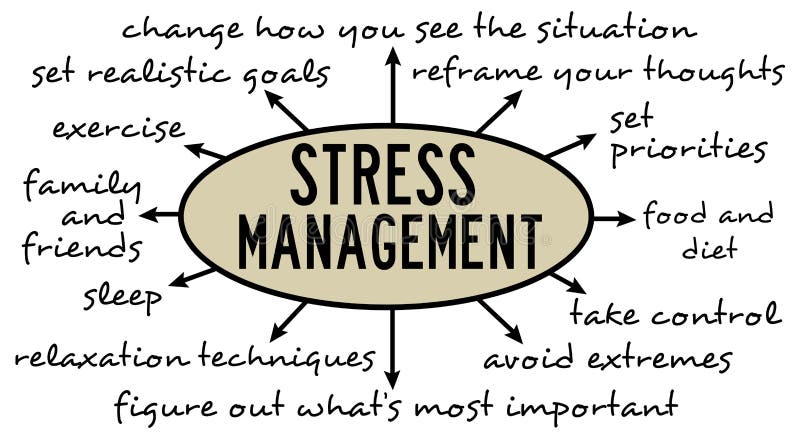
- Self-understanding (e.g. self-identification as a Type A or as a Type B personality)
- Self-management (e.g. becoming better-organized)
- Conflict resolution
- Adopting a more positive attitude
- Self-talk
- Breathing exercises
- Meditation
- Exercise
- Altering your diet
- Taking more regular and effective rest
Two powerful body systems cope with stress. The nervous system controls the rapid body changes, while the endocrine system regulates the longer-term patterns of the stress response by releasing hormones into the blood. The adrenal activates the sympathetic nervous system, reducing the normalizing effects of body function. This increases the metabolic rate, heart rate, circulation, and blood pressure. In addition, the effectiveness of the digestive system is diminished and disturbances in sleep patterns become common.
So how do you guard against stress?
Herbs:
- Ashwagandha (Withania somnifera)
- Brahmi (Bacopa monnieri)
- Jatamansi (Nardostachys jatamansi)
Ayurvedic Supplements:
Stress guard
Ashwagandharista
Brahmi Bati(S.M.Yu)
Meditation
- Plough (Hala Asana)
- Corpse (Shava Asana)
- Go for Sirovasti or Shirodhara
Other stress management techniques
| Get sufficient sleep |
| Get fresh air |
| Get physical exercise through Zumba or Aerobics |
| Enjoy a pure and natural diet. Have a balanced meal |
| Learn to say “no” more often |
| Deal with emotions constructively |
| Develop a sense of humor |
| Develop meaningful relationships |
| Develop a support group |
| Give your life a purpose and meaning |
| Pamper yourself sometimes |
| Buy a pet, especially if you are living alone |
| Enjoy nature |
| Express your aesthetic self |
| Enjoy a favorite recreation |
| Learn time management and delegation techniques |
| Practice deep breathing and relaxation skills |
Stress management is a process for controlling an individual’s level of stress. Stress management may include practicing daily meditation, identifying relaxing activities (which may be different for every individual), or a combination of multiple techniques. Stress management is important because chronic stress can wreak havoc on your body’s immune system and contribute to health problems such as tension headaches, migraine headaches, insomnia, weight gain, depression, anxiety, digestive problems, and even heart disease. Both acute and chronic stress impact memory and concentration, making effective stress management crucial for optimal day-to-day functioning.
Benefits of Stress
Stress often has a negative connotation, but it is actually useful and necessary. Stress can make you more aware of your surroundings, increase your focus, give you needed energy to complete a pending task, and even supply your body with the extraordinary ability to handle an emergency. Your body’s intended purpose for stress is therefore, a naturally good and beneficial one.
Stress is a physical response by your body designed to help you. Stress exists to provide your body with the tools needed to effectively react to unplanned, challenging circumstances. Stress should be reserved for these special circumstances and consequently, occur infrequently. Unfortunately, people can experience stress quite frequently in their lives; thus, spurring on many problems associated with overall health.
Click here for How to Manage Stress Effectively
Stress management is having the ability to recognize situations that may cause stress, in order to use strategies to prevent stress from occurring. Stress management also means setting up your life in a way that the opportunity for stress is unlikely to occur. The best approach to stress management is different from person to person, depending on the stressors that impact the individual and how each individual responds to various coping techniques. Thankfully, there are many known strategies that are widely used and very effective when it comes to managing stress.
Some effective stress management tips and techniques are:-
Time management: Time constraints can trigger stress in people’s lives. Schedules often become overloaded, causing people to feel overwhelmed. In order to alleviate this kind of stress, making a list of priorities can help your schedule become more manageable and possible to complete.
Self-awareness: Knowing your personal limits is crucial because being pushed outside of your personal limitations, can cause unneeded stress. What some people consider a busy schedule, others do not. Some people are equipped to handle multiple tasks while others need a simpler schedule. Therefore, you need to be aware of your boundaries, according to your personality and value system. Eliminate things in your life that do not line up with what you personally can handle so that you experience stress less often.
Healthy diet: Maintaining good nutrition can help both your mind and body function well and give you the ability to cope with every day demands better. When your body receives its necessary nutrients and proper fuel, stress is less likely to accompany everyday tasks.
Exercise: Committing to a consistent exercise routine allows your body to release tension and even relax its muscles, benefiting your physical well-being. Taking steps to support good health gives you the ability to focus on life’s responsibilities without added pressure or stress.
Good support system: Having the ability to talk through challenging situations with trusted friends, can help you avoid stress. A supportive network of friends can provide listening ears and encouraging words, allowing you the ability to work through otherwise difficult situations with more stability and less stress.
Healthy sleep habits: Generally people have trouble sleeping due to stress (e.g., lying awake at night worrying about stressful circumstances). Adequate sleep is important for allowing your body time to repair and rejuvenate, which helps with mental alertness, memory, and concentration, and also boosts immune strength. Going to bed at the same time each night, eliminating distractions such as television and mobile devices, and aiming for seven to eight hours of sleep each night are best practices for healthy sleep.
Stress Management for Immune Health
Stress is closely tied to immune functioning; people who experience chronic, high levels of stress and do not manage their stress effectively often are sick more frequently and may suffer other health consequences in the long term. If you suffer from chronic stress, there are some foods believed to help combat stress, and in general, a healthy, well-balanced diet rich in vitamins and minerals will help your body to function at its best and ward off stress.
When your immune system is weakened as a result of chronic stress, you’re more likely to catch colds and viruses, and illness in turn creates additional stress as it’s challenging to meet your obligations at work and home when you’re feeling under the weather. Boosting your immune system with supplements that provide immune support can help to ward off these ill effects, halting the vicious cycle in its tracks. An immune supplement with probiotics offers the added benefit of regulating your digestive processes, which are often thrown askew when your body is feeling the effects of stress.
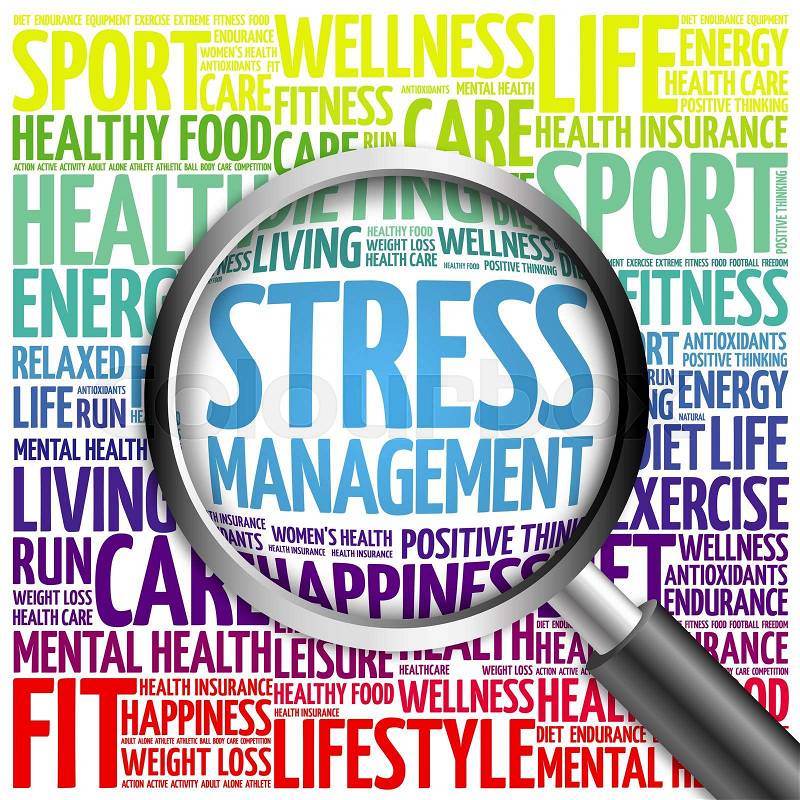
Click here for Stress Management part - 1
- Do something to help others. In times of stress, we tend to turn our focus inward and dwell on the challenges that are creating negative stress. But the opposite is also true: “As you might expect, getting support from others can cool down the stress response. But giving support and helping others is also remarkably effective. Researchers have found that providing support to others—even in small ways, such as opening the door for someone—can reduce stress and increase a sense of well-being.”
- Delegate tasks such as house cleaning, or hire a personal assistant.”If a clean house makes everything in your world better, why wouldn’t you take care of yourself and your family by hiring a housekeeper?”
- Spend time with a pet. If you don’t have a pet, consider adopting one. “Pets are loving and adorable creatures that can counter the negative effects of stress. Dogs especially can be caring and spontaneous in their affection for you. Cuddle them or take them for a walk and you’ll experience a feel-good factor that can take away the blues.”
- Ask yourself what you’d say to a close friend who was in a stressful situation similar to yours.“‘Self-compassion is one of the most important sources of emotional resilience we have,’ It means, simply, treating yourself with the same kindness you’d treat a friend who was going through a hard time. ‘Most people critique themselves and tear themselves down when they’re stressed. They go straight into fix-it mode and don’t give themselves any comfort, care, or support,’ Imagining a friend coming to you with the problem you’re dealing with, and saying to yourself what you’d say. ‘When you treat yourself with self-compassion, your levels of stress hormones like cortisol decrease and your levels of feel-good hormones like oxytocin increase, instantly making you feel calmer and more capable of dealing.”
- Try color therapy to create an environment that supports calmness and relaxation.“Have you ever heard of Colorology? Well it’s the theory that color and light can be used to balance energy wherever a person’s body is lacking, whether it’s mental, emotional, physical, or spiritual. If you are feeling overly stressed, you can use color as a stress management tool. Different colors have different effects on the brain, so envisioning certain shades or even carrying a little patch of a certain color with you throughout the day can make you feel better and more in control. For example, Pink, yellow, blue, and green is considered to be particularly calming!”
- Create a toolbox of stress-management techniques. “One stress-shrinking strategy won’t work for all your problems. For instance, while deep breathing is helpful when you’re stuck in traffic or hanging at home, it might not rescue you during a business meeting. “Because stress is complex, ‘What we need is a toolbox that’s full of techniques that we can fit and choose for the stressor in the present moment.”
- Rely on your supportive relationships.“Draw strength from friends and family members. You may have some friends who help you to make decisions, to feel loved, and to feel hopeful. Call them. Talk to them. Tell them how you feel. You may have some friends or family members who make you angrier or sadder. It might be good not to talk to them when you feel stress. Anger makes stress worse.”
- Create something.“Paint, Craft, Read, enjoy photos, writing, and artwork. Creating something unique and beautiful can relax your mind and your body.”
- Fill your environment with soothing aromatherapy scents.“Studies suggest aromatherapy can be a good way to relieve stress. Certain aromas (like lavender) have been consistently shown to reduce stress levels.”
- Fix something unrelated to the stressor.“If you’re having problems in one area of your life, it can be therapeutic to fix something in an unrelated area. It can be anything, from a leaking faucet to other minor home repairs, or even a relationship with someone that’s been a bit rocky lately. It’s a way of proving to yourself that you can solve problems and mend things, and when you return to your original problem you’ll find that you have new clarity and confidence and can come up with a more creative solution.”
- Learn to recognize when stressors are truly problems worth addressing. This is especially important for those with a tendency to avoid anger. “‘Women, in particular, are told over and over again to be nice no matter what. Get angry and you could lose your reputation, marriage, friends, or job’. If you grew up in a volatile or abusive home, you may not believe anger can be controlled or expressed calmly.”
“The damage: The primary function of anger is to signal that something is amiss and encourage resolution. By ignoring that warning sign, you may end up engaging in self-destructive behaviors (overeating, excessive shopping).
“How to Turn It Around
- Challenge your core beliefs. Ask yourself, ‘Is it really fine for my employees to leave early whenever they want? For my partner to go golfing every weekend?’ If you’re honest, the resounding answer to these questions is probably ‘You know what? It’s not fine.’ Recognizing that something is wrong is the first step to setting it right.
- Step outside yourself. Imagine that a friend is the one being abused, overworked, or neglected. What would be the appropriate way for him/her to respond? Make a list of actions he/she might take, then ask yourself why it is OK him/her, but not you, to react that way.
- Embrace healthy confrontation. Did someone tick you off? Tell the person―in a positive, constructive way. Yes, he or she might be surprised, possibly even (gasp!) angered, by your words. And you know what? He or she will get over it. ‘Avoidance often does more damage to families and friendships than any expression of anger.
- Visualize calm and peaceful situations or settings.“It sounds New Age-y, but at least one study, has found that it’s highly effective in reducing stress. The suggestion is to follow a routine: Close your eyes, take three long, slow breaths, and spend a few seconds picturing a relaxing scene, such as walking in a meadow, kneeling by a brook, or lying on the beach. Focus on the details—the sights, the sounds, the smells.”
Click here for Stress Management part - 2
1. Change your emotional response.“Managing stress doesn’t mean eliminating stressors from your life. It means developing positive strategies for dealing with stress to avoid negative consequences. Think about stress as your reaction to an event, rather than the event itself. This makes it easier to identify healthy ways to manage stress. Even though you can’t control some of the stressors in your life, you can control your response to them.”
2. Practice daily relaxation.“Relaxation is more than sitting in your favorite chair watching TV. To relieve stress, relaxation should calm the tension in your mind and body. Some good forms of relaxation are yoga, tai chi (a series of slow, graceful movements), and meditation. Like most skills, relaxation takes practice. Join a class to learn and practice relaxation skills. Deep breathing is a form of relaxation you can learn and practice at home using the following steps. It’s a good skill to practice as you start or end your day. With daily practice, you will soon be able to use this skill whenever you feel stress.”
- Sit in a comfortable position with your feet on the floor and your hands in your lap or lie down. Close your eyes.
- Picture yourself in a peaceful place. Perhaps you’re lying on the beach, walking in the mountains, or floating in the clouds. Hold this scene in your mind.
- Inhale and exhale. Focus on breathing slowly and deeply.
- Continue to breathe slowly for 10 minutes or more.
- Try to take at least five to 10 minutes every day for deep breathing or another form of relaxation.”
3. Learn to recognize the things you cannot change.“Accepting that you can’t change certain things allows you to let go and not get upset. For instance, you cannot change the fact that you have to drive during rush hour. But you can look for ways to relax during your commutes, such as listening to music or book.”
4. Write down your feelings.“Often we don’t just censor what we say, we censor what we think. Sometimes we won’t even admit to ourselves that we’re feeling overwhelmed, lost, or stressed. As a result, we keep things ‘bottled up’ and they stay on our mind, elevating our heart rate and blood pressure in the process.”
“Talking to someone can help to externalize this stress and lighten the burden. And failing this, writing down your problems in some kind of journal can be just as effective.”
Think this is just a nice idea? Actually, it’s backed up by quite a lot of evidence. In one study it was found that people who had lost their jobs were actually more likely to find employment sooner if they wrote down their feelings
(1). The reason presumably is that they became more positive and thus performed better in subsequent interviews and opened themselves up for more opportunities.
“In other studies, it was found that writing about stressful events could help individuals to see the positive ‘silver linings’ of those situations.”
(2). Another concluded that ‘FEW’ (focused expressed writing) could act as a useful substitute to therapy for those unwilling or unable to receive it.
(3). Expressive writing has even been found to help reduce the symptoms of asthma.
(4) Seeing a professional therapist is likely to still be more effective than expressive writing alone as therapists can provide feedback and insight and teach useful coping strategies and techniques. That said though, writing is a highly effective alternative and could be especially effective when used in combination with psychotherapeutic intervention. Cognitive-behavioral therapists in fact do recommend journaling for the treatment of many conditions.
5. Practice mindfulness.“For many years Buddhists and other contemplative traditions have known that paying attention to the present moment is deeply relaxing as anxieties about the future and worries about the past disappear.”
“Mindfulness breaks are great stress reduction tools and can be taken as one would take cigarette breaks at work for three minutes at a time. Also bring the principles to daily work activities: doing one thing completely at a time. This will also make you more efficient as you will not waste time swapping between activities. Avoid interruptions wherever possible by only checking your e-mail twice a day, for example.”
6. Find something to laugh about. Laughter is a great stress- buster. “‘Laughter re-enchants daily living,’. Research shows that we experience about 30 of these ‘heart hassles’ every day, stressing the heart both figuratively and physiologically. On both counts, humor is healing.”
7. Learn (and practice) the three essential steps for relaxation.“Relaxation skills are basic to stress management. It’s how our bodies and mind are able to release tension and slow down. You can easily learn to relax, to slow down, even appreciate and embrace stillness.”
“There are three basic elements or results of any effective stress management approach:
- A here and now awareness – being in the present moment.
- Slowing down of the mind and body
- Suspension of judgment about one’s experience and one’s self.
8. Try meditation, a form of guided thought.“Meditation is a form of guided thought. It can take many forms. You can do it with exercise that uses the same motions over and over, like walking or swimming. You can meditate by practicing relaxation training, by stretching or by breathing deeply.”
“Relaxation training is simple. Start with one muscle. Hold it tight for a few seconds then relax the muscle. Do this with each of your muscles, beginning with the toes and feet and working your way up through the rest of your body, one muscle group at a time.”
9. Tap into the power of music.“Are you a music lover? Or a nature lover? Experiment with the following:
- The right music can lower your blood pressure and help you relax. Keep the music that works for you on your phone, computer, iPod, or play it in the car when traffic has you stressed.
- No music at hand? Trying singing or humming a favorite tune.
- Tune in to a soundtrack of nature, such as crashing waves, wind rustling the trees, birds singing. If the real thing is on your doorstep, even better.
- Buy a small fountain, so you can enjoy the soothing sound of running water in your home or office. When stress hits, close your eyes and take a few minutes to focus on the calming trickle.
- Keep the recorded voice of a loved one on your mobile phone. Just the sound of someone special’s voice can help ease tension.”
10. Don’t make mountains out of molehills, and spend 80% of your time focused on the solution.“One of the best ways to make your day and life easier, lighter, and less stressful is to not build mountains out of molehills. To not create extra drama, overthink, or create a problem out of something that doesn’t matter much. Or just out of air.”
“So how can you handle this bad habit?”
“Well, when a big problem is starting to build in your mind first say something like: Hold on now…”
“This will help you to pause and become more receptive to change your line of thinking. Then ask yourself:
Will this matter 5 years from now? Or even 5 weeks from now?
Those two steps will help to build a lot fewer mountains in your life.
Spend 80% of your time focusing on a solution.
And only 20% of your time on dwelling on your non-molehill issue or problem. Instead of taking a common path and doing it the other way around. You’ll live a much more action-filled life and feel less pessimistic and powerless if you do.”
11. Read books that nourish the soul.“Books containing positive affirmations, daily meditations, or uplifting stories will help you to feel better and restore your belief that life can be good.”
12. Use problem-solving techniques. First identify and clearly define the problem, then brainstorm solutions.“Now that you have a well-defined problem, it’s time to think about solutions. Think of all the ways in which you might solve your problem. The sky’s the limit. Now isn’t the time to judge whether one solution is better than another. Not sure where to begin?” Try these tips:
- Recall past problems that you were able to solve. Could a similar solution work for this problem, too?
- Ask friends, family, and people you trust for advice.
“If you’re still having trouble, perhaps your problem is too complicated. In that case, try to divide and conquer. Break the problem into smaller parts you can more easily tackle.”
“Remember, consider everything that pops into your head — even ideas that initially seem silly. Your stress-reduction plan may include a little zaniness. Maybe taking an Aerobics dancing class after work a few days a week will help you to unwind better than would quiet meditation.”
Click here for Stress Management part - 3
- Take instant vacations.“Sometimes the best way to de-stress is to take your mind away to a more relaxing place.”
- Visualize. Have a favorite place where you can imagine yourself relaxing. The place should be beautiful and calm. When you’re stressed, sit down, lean back, take deep breaths, close your eyes, and imagine yourself in your calm-place.
- Take time out for yourself. Everyone deserves time for themselves —a bath or something that allows time to think and de-stress. Try a warm bath with your ears just underwater. Listen to yourself take deep, slow breaths. Take your pulse and count as your heart rate goes down.
- Enjoy hobbies or creative art as an instant vacation.
- Look at the beauty around you and get pleasure from the small things you may have stopped noticing.
- Take mini-vacations. Sometimes we forget that the park around the corner is a great place to hang out. A walk outside can be a mini-vacation if you choose to forget your worries.
- Reading a good book is an escape from reality. You have to imagine the sights, sounds, and smells—you are somewhere else for a while.
2. Turn problems into opportunities with a positive shift in thinking.“The optimistic person, however, knows how to manage stress in difficult situations and soon moves beyond this disappointment. He responds quickly to the adverse event and interprets it as being temporary, specific, and external to himself. The optimist responds with a positive attitude, knows how to and counter the negative feelings by immediately re-framing the event so that it appears positive in some way.”
- “Since your conscious mind can hold only one thought at a time, either positive or negative, if you deliberately choose a positive thought to dwell upon, you keep your mind optimistic and your emotions positive. Since your thoughts and feelings determine your actions, you will tend to be a more constructive person, and you will start moving forward and more rapidly toward the goals that you have chosen.”
- “It all comes down to the way you talk to yourself on a regular basis. In our courses of problem solving and decisions making, we encourage people to respond to problems by changing their language from negative to positive. Instead of using the word problem, we encourage people to use the word situation. You see, a problem is something that you deal with. The event is the same. It’s the way you interpret the event to yourself that makes it sound and appear completely different.”
- “Even better than the situation is the word challenge. Whenever you have a difficulty, immediately re-frame it, choose to view it as a challenge, and start moving forward. Rather than saying, ‘I have a problem,’ say, ‘I have an interesting challenge facing me.’ The word challenge is inherently positive. It is something that you rise to that makes you stronger and better. It is the same situation, only the word that you are using to describe it is different.”
- “The best of all possible words to maintain a positive attitude and manage stress is the word opportunity. When you are faced with a difficulty of any kind, instead of saying, ‘I have a problem,’ you can say, ‘I am faced with an unexpected opportunity.’ And if you concentrate your powers on finding out what that opportunity is—even if it is only a valuable lesson—you will certainly find it. As the parable says, ‘Seek and ye shall find, for all who seek to find it.’”
3. Avoid drugs and alcohol.“They may seem to be a temporary fix to feel better, but in the long run they can create more problems and add to your stress—instead of taking it away.”
4. Take a break from acute stressors.“It may seem difficult to get away from a big work project, a crying baby, or a growing credit card bill. But when you give yourself permission to step away from it, you let yourself have time to do something else, which can help you have a new perspective or practice techniques to feel less overwhelmed. It’s important to not avoid your stress (those bills have to be paid sometime), but even just 20-minutes to take care of yourself is helpful.”
5. Implement time management strategies.“Your workload can cause stress, if you don’t manage your time well. This can be a key source of stress for very many people.”
- “Take time management quiz to identify where you can improve, and make sure that you use time management tools such as To-Do Lists, Action Programs, and Eisenhower’s Urgent/Important Principle to manage your priorities.”
- “Then use Job Analysis to think about what’s most important in your role, so that you can prioritize your work more effectively. This helps you reduce stress because you get the greatest return from your efforts, and you minimize the time you spend on low-value activities.”
- “Also, avoid multitasking, only check email at certain times, and don’t use electronic devices for a while before going to bed, so that you use this time to ‘switch off’ fully.”
6. Calendars and schedules are helpful for ensuring that you don’t over-commit yourself, which is a common stress-inducing scenario.“Good time-management skills are critical for effective stress control. In particular, learning to prioritize tasks and avoid over-commitment are critical measures to make sure that you’re not overscheduled. Always using a calendar or planner and checking it faithfully before committing to anything is one way to develop time-management skills. You can also learn to identify time-wasting tasks by keeping a diary for a few days and noticing where you may be losing time.”
“For example, productivity experts recommend setting aside a specific time (or multiple times) each day to check and respond to email and messages rather than being a continual slave to incoming information. Banishing procrastination is another time-management skill that can be learned or perfected.”
7. Engage in low-pressure, enjoyable activities.“Get crafty (art, scrapbooking, writing /journaling), listen to music, get physical (walk, run, dance, do yoga), get outside, or just give yourself a few minutes off from what you are doing to do simply nothing. Don’t be afraid to take a break when you are studying or writing a paper. Schedule it in! A 20-minute power nap can re-energize you for hours and a brisk walk around the block can help to clear your head and put your thoughts in order.”
8. Regular exercise can be an effective way to both prevent and manage stress.“For the biggest benefits of exercise, try to include at least 2½ hours of moderate-intensity physical activity (e.g. brisk walking) each week, 1¼ hours of vigorous-intensity activity (such as jogging or swimming laps), or a combination of the two.”
- 5 X 30: Jog, walk, bike, or dance three to five times a week for 30 minutes.
- Set small daily goals and aim for daily consistency rather than perfect workouts. It’s better to walk every day for 15-20 minutes than to wait until the weekend for a three-hour fitness marathon. Lots of scientific data suggest that frequency is the most important.
- Find forms of exercise that are fun or enjoyable. Extroverted people often like classes and group activities. People who are more introverted often prefer solo pursuits.
- Distract yourself with an iPod or other portable media player to download audiobooks, podcasts, or music. Many people find it’s more fun to exercise while listening to something they enjoy.
- Recruit an “exercise buddy.” It’s often easier to stick to your exercise routine when you have to stay committed to a friend, partner, or colleague.
- Be patient when you start a new exercise program. Most sedentary people require about four to eight weeks to feel coordinated and sufficiently in shape so that exercise feels easier.
9. Spend time in nature.“Going outdoors helps to relieve your stress naturally, with research showing levels of the stress hormone cortisol lower in those who live in areas with the greenest space, as are their self-reported feelings of stress. Even five minutes in nature can help reduce stress and boost your mood.”
10. Find positive behavior coping strategies.“There are both positive and negative coping strategies that people use. Some people may drink or smoke because of stress but these are obviously negative coping strategies. Some positive coping strategies are writing goals to tackle the problem, writing ‘to do’ lists, exercising, or doing the things that increase eustress (good stress). Writing goals and lists help to organize thoughts and actions so that you know how to fix the problem or possibly remove the stressor if possible. Exercise increases endorphins in our body or gives us the ‘runner’s high’ while also releasing the tension in our body and feelings of anxiety, depression, anger, and frustration.”
11. Eat a variety of fresh fruits and vegetables.“‘Stress eating’, in the form of over-indulgence or trips to the vending machine or drive-through, may seem like a great idea when you’re feeling anxious. But the fact is that you’ll feel better in the long run if you reach for an apple instead of a bag of chips when you have the urge to munch.”
12. Learn progressive muscle relaxation techniques.“Progressive Muscle Relaxation is meant to help you resolve any tension in your muscles and body. The idea is that you first tense and then relax all the muscles throughout your body to reach the ultimate state of relaxation. ”
Click here for Stress Management part - 4
1. Identify the sources of stress in your life and take steps to avoid them. “We sometimes create our own stress because of habits and traits that can have harmful effects that can be reduced using cognitive restructuring techniques such as behavioral modification, assertiveness training, time management, and stress inoculation. Others turn to smoke, alcohol, or drugs to relieve their stress but these short-term solutions eventually cause even more stress. Long-term use of prescription medications can result in dependency or adverse side effects and some supplements can have similar problems or interact with other drugs.”
2.. Use planning and lists to create a sense of mastery over your important daily tasks to avoid stress.“Make a list of the important things you need to handle each day. Try to follow the list so you feel organized and on top of things. Put together a coping plan step by step so you have a sense of mastery.”
3. Keep a stress diary.“Note down the date, time, and place of each stressful episode, and note what you were doing, who you were with, and how you felt both physically and emotionally. Give each stressful episode a stress rating (on, say, a 1-10 scale) and use the diary to understand what triggers your stress and how effective you are in stressful situations. This will enable you to avoid stressful situations and develop better coping mechanisms.”
4. Set realistic expectations.“Being busy is sometimes inevitable, but regularly taking on more than you can manage can cause unwanted and unwelcome stress. Tell yourself that it’s okay to say no to activities at your child’s school or to extra projects at work — you are not obligated to accept every request made of you. Additionally, don’t take on more financial responsibilities — such as a new car or a bigger house — if you think they’ll be a stretch. Being realistic about your finances is an important strategy for managing stress.”
5. Prioritize and set limits.“It might feel nice to rattle off all the non-profits you volunteer with, and you may feel good about filling your calendar with bake sales and charity events. But at the end of the day, you may be stretching yourself too thin.”
“Set priorities around the groups you’re most passionate about, and only dedicate your time to those. Learn to say no when you absolutely cannot take on anything else, and don’t look back. You’ll be healthier and happier for it.”
6. Reflect on your day at the end of each day using intention and reflection. “When you can, take time to reflect at the beginning and end of each day. In the morning, you may want to think about how you want your day to be. Your intentions can be something you want to accomplish or ‘do,’ and they can also be about how you feel, or how you want to ‘be’.”
7. Plan and prepare for situations and events that you know will be stressful.“Prepare ahead of time for stressful events like a job interview or a hard conversation with a loved one.”
- Picture the event in your mind.
- Stay positive.
- Imagine what the room will look like and what you will say.
- Have a back-up plan.
8. Learn to recognize stressors and signs that you’re experiencing stress. “When you feel stress setting in, observe your body, and learn where it hits, what happens first. The earlier you can recognize stress signals, the easier it is to change your behavior and stop the progress of the stress.”
- “When you are stressed, choose fight or flight. Hiding your anger is more stressful than expressing it but choose your fights. Make sure it’s worth it.”
9. Don’t ignore the warning signs that stress is taking over your life or beginning to pose health risks.“If you are feeling stressed out, or if you relate to any of the symptoms above, don’t ignore it. Many live in denial and cease to do anything about the state of stress they are in. People may not even realize how stressed they really are. Don’t keep putting off those warning signs. Check-in with yourself and do something about it. Learn stress management skills and get to the bottom of your stress before it gets worse.”
10. Create effective stress rituals that work for you.“Make sure you take stress breaks. Get up from your desk and walk around, or get outside for some fresh air. Do some deep breathing, shoulder shrugs, or just close your eyes for one minute. Taking a mental or physical break is an important strategy for dealing with day-to-day stress.”
11. Stay well-hydrated by drinking plenty of water.“We all know and understand that a vast percentage of our body is made up of water. It, therefore, makes sense that water would provide you with the support you need to handle stress more effectively. In fact, making sure that you stay hydrated throughout your day is essential as it will boost your levels of energy and enable you to work through circumstances with more vigor and persistence. ”

Click here for Tips to De-Stress
Tips to De-stress
- Identify triggers
- Remember …..this too shall pass
- Walk outside, breathe deeply, return to nature
- Talk to yourself if you were a good friend
- Write / Laugh
- Visualize
- Stop procrastinating
- Accept people for who they are
- Be grateful
- Avoid multitasking
- Step away from the situation/screen
- Identify what you really want
- Get help – you don’t have to do it all alone
- Write in a journal
- Create cushions in your calendar
- Re-evaluate your priorities
- Do your research
- Learn something new
- Perform, Teach or give a speech
- Play a board game
- Volunteer
- Say No
- Engage in your Interests
- Treat yourself
- Try Aromatherapy
- Take a Nap
- Meditate / Yoga
- Be grateful
- Eat a snack ( Mindfully!! ) / Mood-boosting foods
- Put on some music/sing
- Cuddle with pet
- Learn something new
- Find a relaxation mentor
- Squeeze a stress ball
- Hang up, then turn off your phone
- Progressive muscle relaxation
- Sleep to combat stress
- Stop should-ing yourself
- Socialize with friends/colleagues
- Make a change
- Exercise daily
- Stay in the moment ( Present )
- Change your perception
- Forgive yourself
- Remember you are Human
How to Relax and De-stress :
If you find yourself plagued with anxiety, finding it hard to sleep means you are in a major stress zone. You need to work on reflecting on your stress and relaxing your mind and body before you do any more damage. If you want to know how to lead a more relaxing life, just follow these steps.
Stress reduction help –
A. Reflect on your stress
1. Write down your thoughts
2. Make a game plan
3. Vow to eliminate as many sources of stress as you can
4. Share your feelings
5. Know when to get help
B. Relax your mind
1. Meditate
2. Watch a movie
3. Spend time with friends
4. Go for a long drive
5. Read
6. Calm your mind before bed
C. Relax your body
1. Give yourself a massage
2. Avoid too much caffeine
3. Exercise
4. Take a bubble bath
5. Eat well
6. Sleep well
Some techniques of time management may help a person to control stress. For example:
- Becoming more organized and reducing the generation of clutter
- Setting priorities can help reduce anxiety
- Using a “to do” list of tasks that a person needs to complete can give a person a sense of control and accomplishment
Myths surround stress. Dispelling them enables us to understand our problems and then take action against them. Let’s look at these myths.
Myths about stress and Time Management:-
Myth #1: All stress is bad. No, there’s good and bad stress – Good stress is excitement, thrills, etc. The goal is to recognize the personal signs of bad stress and deal with them.
Myth #2: Planning my time just takes more time – Actually, research shows the opposite.
Myth #3: I get more done in more time when I wisely use caffeine, sugar, alcohol, or nicotine – Research shows that the body always has to “come down” and when it does, you can’t always be very effective then after the boost.
Myth #4: A time management problem means that there’s not enough time to get done what needs to get done – No, a time management problem is not using your time to your fullest advantage, to get done what you want doing.
Myth #5: The busier I am, the better I’m using my time – Lookout! You may only be doing what’s urgent, and not what’s important.
Myth #6: I feel very harried, busy, so I must have a time management problem – Not necessarily. You should verify that you have a time management problem. This requires knowing what you really want to get done and if it is getting done or not.
Myth #7: I feel OK, so I must not be stressed – In reality, many adults don’t even know when they’re really stressed out until their bodies tell them so. They miss the early warning signs from their body, for example, headaches, still backs, twitches, etc.
Myth #8: Stress is the same for everybody – Stress is different for each of us. What is stressful for one person may or may not be stressful for another; each of us responds to stress in an entirely different way.
Myth #9: No Symptoms No Stress – Absence of symptoms does not mean the absence of stress. In fact, camouflaging symptoms with medication may deprive you of the signals you need for reducing the strain on your physiological and psychological systems.
Myth #10: Only major symptoms of stress required attention – Minor symptoms of stress are the early warnings that your life is getting out of hand and that you need to do a better job of managing stress.
Myth #11: The most popular techniques for reducing stress are the Best ones – No universally effective stress reduction techniques exist. We are all different, our lives are different, our situations are different, and our reactions are different. Only a comprehensive program tailored to the individual works.
Myth #12: Stress is not a big deal – Every moment of frustration you have about your job, every point of friction in your relationships at work and at home, every fear or concern you have about money, your health, and the future—essentially, the sum total of all the negative emotions in your life, from the moment you get up until the moment you lie down, is stress. For most individuals, it is a very big deal.
Myth #13: Stress is a Motivator – We need to distinguish between stress and stimulation. Having deadlines, setting goals, and pushing yourself to perform at capacity are stimulating. Stress is when you’re anxious, upset, or frustrated, which dramatically reduces your ability to perform. People who get things done under stress are succeeding in spite of their stress, not because of it.
Myth #14: Stress is everywhere, so you just have to live with it – Stress is not everywhere and you don’t have to simply accept it. You can shape your life in such a way that you have stress-free time during your day. You also can develop effective strategies for managing those experiences in your life that you do find stressful. Prioritizing, breaking down complicated tasks into smaller, simpler projects, and effective time management strategies are just a few of the ways to reduce stress.
Myth #15: Stress management is all about eliminating stress from your life – It is healthier to accept that stress is a part of life, and then work to eliminate what you can and develop strategies to manage the stressors you cannot eliminate from your life.
Myth #16: Learning stress strategies are complicated – Most stress control approaches are designed for fast learning and are not convoluted. You can learn many of them in moments, and walk out and use them in real life the same day.
Myth #17: The more hours you work, the more stress you will have – People who love what they do handle stress better than those who dread going into the office. The difference is not the hours worked, but their attitude.
Myth #18: Successful people have little or no stress – It is a myth that people with lots of money or high achievement have little stress. Stress hits everyone. It’s just that some people manage it better.
Myth #19: It is obvious that someone is experiencing Stress – Stress can be silent and not very obvious. There are many symptoms that lie under the surface.
Myth #20: A drink is an effective way to deal with stress – Alcohol actually increases the number of stress hormones we produce. So that wine may actually increase your stress. Stress actually reduces the sedative effects of alcohol. So stress really can be a bit of a buzz kill.
Myth #20: Stress causes gray hair – When you experience a great deal of stress, your body might temporarily stop growing hair because it’s focusing on repairing the rest of your body.
Myth #21: The more successful you are, the more stressed you are – Stress doesn’t make someone successful. In fact, stress reduces a lot of productivity. Researchers explain that stress can cause “decreased mental acuity, lowered creativity, diminished ability to problem-solve, mental exhaustion, and eventually physical burnout.”
We hesitate to admit how big it is because of the myths above, which are woven tightly into our culture and prevent us from dealing with stress more effectively. But with a little application, anyone can learn the truth about how stress works and, instead of simply managing it, start Eliminating it.
Quotes about Stress Management
Stress management is life management. If you take control of your stress, your life will thank you for it!
It’s not stress that kills us it is our reaction to it.
The greatest weapon against stress is our ability to choose one thought over another
There is more to life than increasing its speed
Our anxiety does not come from thinking about the future, but from wanting to control it
Stress is caused by being ‘here’ but wanting to be ‘there’
Its good idea always to do something relaxing prior to making an important decision in your life
Don’t stress the could haves, if it should have, it would have
Stress is nothing more than a socially acceptable form of mental illness
You are braver than you believe and stronger than you seem, and smarter than you think
Slow down and everything you are chasing will come around and catch you
It’s not the load that breaks you down, its the way you carry it
Tension is who you think you should be, Relaxation is who you are
Stop focusing on how stressed you are, remember how blessed you are
Be with those who bring out the Best in you, not the stress in you
Stress is the trash of modern life. We all generate it but if you don’t dispose of it properly it will pile up and overtake your life



